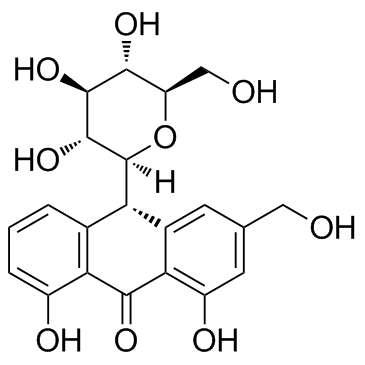Antioxidant actions of phenolic compounds found in dietary plants on low-density lipoprotein and erythrocytes in vitro.
Rosanna Y Y Lam, Anthony Y H Woo, Po-Sing Leung, Christopher H K Cheng
Index: J. Am. Coll. Nutr. 26(3) , 233-42, (2007)
Full Text: HTML
Abstract
There is increasing interest in the study of the antioxidant actions of plant phenolic compounds as evidence shows that consumption of plant products rich in these compounds contributes to protection from a number of ailments including cardiovascular diseases. In the present study, the antioxidant effects of selected phenolic compounds from dietary sources, namely barbaloin, 6-gingerol and rhapontin, were investigated.Low-density lipoprotein (LDL), erythrocytes and erythrocyte membranes were subjected to several in vitro oxidative systems. The antioxidant effects of the phenolic compounds were assessed by their abilities in inhibiting hemolysis and lipid peroxidation of LDL and erythrocyte membranes, and in protecting ATPase activities and protein sulfhydryl groups of erythrocyte membranes.6-Gingerol and rhapontin were found to exhibit strong inhibition against lipid peroxidation in LDL induced by 2,2'-azobis(2-amidinopropane) hydrochloride (AAPH) and hemin while barbaloin possessed weaker effects. A similar order of antioxidant potencies among the three compounds was observed on the lipid peroxidation of erythrocyte membranes in a tert-butylhydroperoxide (tBHP)/hemin oxidation system. On the other hand, barbaloin and rhapontin were comparatively stronger antioxidants than 6-gingerol in preventing AAPH-induced hemolysis of erythrocytes. Among the three compounds, only barbaloin protected Ca2+-ATPase and protein sulfhydryl groups on erythrocyte membranes against oxidative attack by tBHP/hemin. Interestingly, rhapontin demonstrated protective actions on Na+/K+-ATPase in a sulfhydryl group-independent manner under the same experimental conditions.In view of their protective effects on LDL and erythrocytes against oxidative damage, these phenolic compounds might have potential applications in prooxidant state-related cardiovascular disorders.
Related Compounds
| Structure | Name/CAS No. | Molecular Formula | Articles |
|---|---|---|---|
 |
Aloin
CAS:1415-73-2 |
C21H22O9 |
|
The content of secondary phenol metabolites in pruned leaves...
2008-10-01 [J. Nat. Med. 62(4) , 430-5, (2008)] |
|
Determination of aloenin, barbaloin and isobarbaloin in aloe...
2001-03-05 [J. Chromatogr. B. Biomed. Sci. Appl. 752(1) , 91-7, (2001)] |
|
Liquid chromatographic determination of barbaloin (aloin) in...
1985-01-01 [J. Assoc. Off. Anal. Chem. 68(3) , 493-4, (1985)] |
|
Isolation of a human intestinal bacterium capable of transfo...
1991-02-01 [Planta Med. 57(1) , 15-9, (1991)] |
|
Metabolism of barbaloin by intestinal bacteria.
1988-11-01 [Chem. Pharm. Bull. 36(11) , 4462-6, (1988)] |